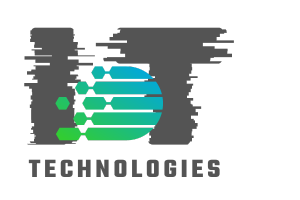
Non-Invasive Leak Detection: Innovative Approaches and Technologies
Share
In an increasingly connected and technologically advanced world, the demand for more efficient and reliable methods to prevent and mitigate damage has never been greater. Non-invasive leak detection stands out as a transformative approach in this regard, especially with its capacity to identify issues without the need for intrusive measures. Tech professionals and enthusiasts are at the forefront of embracing these technologies, understanding their potential, and integrating them into various systems.
The innovative journey of non-invasive leak detection is intriguing, and its impact is profound, showing promise for application across multiple sectors, including residential, commercial, and industrial domains.

Understanding the Concept of Non-Invasive Leak Detection
Leak detection has evolved far beyond traditional methods, which often involved significant manual labor and invasive techniques. Today's technologies harness advanced sensors and data analytics to identify leaks without disrupting existing infrastructure. This methodology not only saves time but also minimizes costs associated with repairs and downtime.
For instance, the integration of smart fluid detection systems allows for real-time monitoring and swift leak identification, crucial for systems aiming to maintain operational efficiency and sustainability.
Technological Advancements in Non-Invasive Leak Detection
Several innovative technologies are at play, pushing the boundaries of what's possible in leak detection. Techniques such as acoustic sensors, infrared thermography, and electromagnetic field monitoring are just a few examples of how engineers and tech developers are addressing the challenges of leak identification.
Acoustic sensors, for example, rely on sound vibrations to detect anomalies. Each vibration holds a signature pattern that can quickly indicate a leak's location, even in extensive networks. This form of Bluetooth water sensor technology offers precision and accuracy that is critical in safeguarding large infrastructures.
Applications and Benefits of Non-Invasive Leak Detection
The applications for non-invasive leak detection are extensive. In residential settings, these systems provide homeowners with peace of mind by preventing water damage caused by undetected leaks. Commercially, businesses use these technologies as part of their risk management strategies, ensuring minimal disruption and protecting assets. Industrially, they maintain functional integrity in complex pipelines and distribution networks.
A valuable insight into the value of these technologies can be found in the realm of smart leak detection systems which have been pivotal in preventing water damage and associated repair costs.
The Future of Non-Invasive Leak Detection
Looking forward, continuous advancements in AI and machine learning hold the potential to further enhance leak detection capabilities. The integration of these technologies will not only make systems more autonomous but could also predict and mitigate leaks before they even occur, thanks to predictive analytics and advanced data processing.
Furthermore, leveraging inline water leak detectors represents a move toward systems becoming integral components of smart cities, making infrastructure both smarter and more resilient.

FAQ
1. What is non-invasive leak detection?
Non-invasive leak detection refers to methods and technologies that identify the presence of leaks without the need to physically alter structures or systems, using advanced sensing and data analysis techniques.
2. How does non-invasive leak detection work?
These systems use sensors and software algorithms to monitor systems, identifying changes in sound, temperature, and other variables that indicate a potential leak.
3. Are non-invasive leak detection systems cost-effective?
Yes, they are cost-effective in the long run by preventing extensive damage, reducing downtime, and minimizing repair costs. Additionally, the integration with real-time telemetry ensures maximum efficiency.
